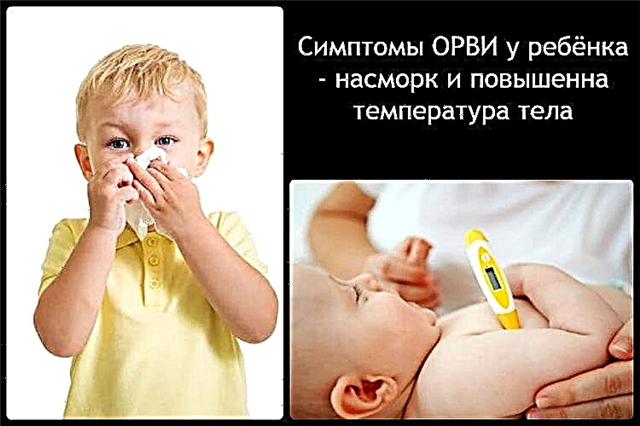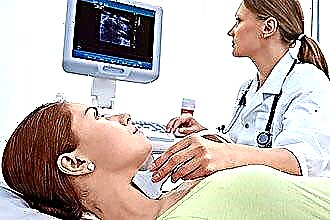Many people think that high head pressure only appears in adulthood. However, some diseases, in combination with hereditary factors and hormonal changes, can accelerate the development of the pathological process. If you do not notice it in time, then a person can become completely blind.
 If the increased intraocular pressure is constant, then this process is called glaucoma. It gradually leads to complete blindness. Glaucoma can be cured if you consult a doctor in a timely manner so that he finds the cause of the increased eye pressure in the patient and prescribes a course of therapy.
If the increased intraocular pressure is constant, then this process is called glaucoma. It gradually leads to complete blindness. Glaucoma can be cured if you consult a doctor in a timely manner so that he finds the cause of the increased eye pressure in the patient and prescribes a course of therapy.
The allowable pressure limit inside the eye varies from 8 to 26 mm. The consequences of the disease arise if it is exceeded.
This is usually due to impaired blood flow and fluid secretion within the eye.
Causes of occurrence
The causes of high blood pressure in adults and children are quite varied. In some cases, the main fault lies with hormones, while in others - the stress experienced. It is possible to correctly identify the factor affecting intraocular pressure by understanding the types of disease:
- Transient. Increased fundus pressure is temporary. Over time, it returns to the acceptable limit.
- Labile. Increased eye pressure manifests itself much more often and it takes longer to normalize, in contrast to the transient type of the disease.
- Stable. Increased intraocular pressure remains constant. Improvement does not occur or appears only occasionally.
The transient form of the disease is characterized by a simultaneous increase in pressure inside the cranium and in the vessels of the eye. Among the main reasons are arterial hypertension and severe fatigue. The second factor usually concerns people who work at the computer for a long time. In some cases, increased eye pressure appears after experiencing stress.
Disruptions in the nervous system and hormonal balance affect the occurrence of all forms of pathology. If the cause is not eliminated in time, the increased intraocular pressure will be permanent and develop into glaucoma. It is usually extremely difficult to detect the disease in the early stages due to the absence of obvious symptoms.
Pathologists of the heart and kidneys can provoke moisture retention in the human body. Due to this phenomenon, edema appears, and pressure rises, including intraocular pressure.
There are more rare causes of the disease, namely:
- diffuse toxic goiter;
- poisoning of the body with chemicals;
- severe menopause;
- endocrine disruptions.
Increased eye pressure is not always primary. It may have a secondary nature of occurrence for the following reasons:
- Neoplasm. The resulting tumor presses on the tissue of the eye, thereby increasing its pressure.
- Inflammation. Diseases that are characterized by an inflammatory process (iritis, uveitis) can reduce or increase the pressure inside the eyeball.
- Injury. The resulting injuries in the eye area are the cause of inflammation and edema, as well as stagnant processes leading to an increase in pressure.
The secondary form of the disease is usually temporary and resolves itself if the underlying disease is cured. If untreated, over time, it turns into glaucoma. This disease occurs mainly in people after 50 years. In rare cases, it is congenital and is called "dropsy of the eye".
Glaucoma is characterized by increased eye pressure on an ongoing basis. In some cases, it manifests itself in the form of crises, in which there is a sharp aggravation of symptoms, mainly in one eye. The trigger (trigger) is most often stress and overwork.
Symptoms and Signs
Signs of increased eye pressure do not always appear in the early stages, and are most often attributed to fatigue. Among them are the sensations of fatigue and dryness in the eyes. Gradually, the symptoms will worsen and sharp pains in the eyeball and head will begin to appear, especially in the temple area. The whites of the eyes will turn a distinct red color. The listed manifestations of high pressure indicate its effect on the optic nerve. If you do not consult a doctor in a timely manner, then soon your vision will deteriorate, up to a complete loss.
With low pressure inside the eyeball, the following symptoms are observed:
- drooping of the eyeball;
- decreased visual acuity;
- tissue atrophy.
The eyes begin to appear dry and dull. If untreated, the consequences will be irreversible.
Increased intraocular pressure most often affects people of mature age. They have a transient and labile form of the disease that occurs constantly due to physical and mental stress.
If the pressure does not drop, then people have the following symptoms:
- dizziness;
- fog before the eyes;
- decreased visual acuity;
- fast fatiguability;
- a feeling of dryness and tension in the eyes;
- pain in the temples.
Choosing a specialist for examination
If signs of pathology are detected, you should consult a doctor. An experienced ophthalmologist (ophthalmologist) should be involved in the treatment and diagnosis of eye diseases. If the nature of the disease is secondary, then other specialists may be required depending on the cause, for example, a therapist, neuropathologist, surgeon, cardiologist, etc.
In order to prevent glaucoma and other eye diseases, people over 45 are advised to come once a year to an ophthalmologist for an examination. Especially if there are endocrine disruptions, as well as heart and kidney diseases. The doctor will need to ask the patient about the bothersome symptoms and then measure the intraocular pressure.
Pressure Measurement Procedure
Doctors advise you to study the method of self-measuring the pressure inside the eyeball. He will not give accurate data, but it will make it possible to understand that you need to contact a specialist. The essence of the method is to lightly press the finger over the eye. In this case, the eyelids must be closed.
If all is well, then the person will feel a dense ball, which can be squeezed a little. You need to start worrying when the eyeball feels like a stone that does not change when pressed. It is no less dangerous if the finger is easily pressed inward. In the first case, we are talking about high pressure, and in the second, about low.
In a hospital setting, the Maklakov method is used. It was invented by a Russian scientist and is used in all modern clinics. The procedure algorithm is as follows:
- Training. First you need to take off your glasses or contact lenses, since it will be impossible to apply the Maklakov method with them.
- Anesthesia. After preparation, the doctor will administer anesthesia. Drops with anesthetic effect ("Dikain") are instilled into each eye.
- Definition. The specialist will ask the patient to lie down on the couch and look at one point. Next, fix the head and place a special load of paint on the eyeball.
 The procedure is painless, but from the outside it can seem extremely unpleasant. The delivered weight will be pressed into the surface of the eyeball, depending on its internal pressure. Some of the ink will remain on top and be printed onto a sheet of paper. The severity of the color will tell the doctor about intraocular pressure. The procedure is performed on each eyeball 2 times for a more accurate result. The paint does not leave after negative reactions and is easily washed off with a tear.
The procedure is painless, but from the outside it can seem extremely unpleasant. The delivered weight will be pressed into the surface of the eyeball, depending on its internal pressure. Some of the ink will remain on top and be printed onto a sheet of paper. The severity of the color will tell the doctor about intraocular pressure. The procedure is performed on each eyeball 2 times for a more accurate result. The paint does not leave after negative reactions and is easily washed off with a tear.
Instead of a load, a portable Maklakov apparatus is sometimes used. It resembles a pen and is completely harmless. There is also a non-contact diagnostic method.Its essence lies in the direction of air to the eyeball. This method does not require anesthesia, but the results will be less accurate.
The course of therapy
Before starting the treatment of pathology, it is necessary to undergo an examination to find its cause. If the pressure is secondary, then symptomatic treatment is carried out against the background of the elimination of the underlying disease. In the early stages of development, the problem can be solved in simpler ways:
- the use of physiotherapy exercises for the eyes;
- putting on special glasses;
- using eye drops;
- reducing the load on the eyeballs;
- exclusion of situations that can injure the eyes, for example, practicing martial arts.
Patients are better off walking down the street more often and watching less TV or studying on the computer. The phone should become only a way of communication, and not a constant irritating factor to the eyes. In difficult situations, laser-assisted surgery is required. It is used to drain excess fluid from the eye. In total, there are two types of surgery to reduce intraocular pressure:
- excision of the iris;
- an increase in the trabecula.
Eye drops are used to treat all forms of the disease. They allow you to improve the outflow of accumulated fluid and saturate the eyeball with the necessary substances. You can buy drops at any pharmacy, but you must consult with an ophthalmologist in advance. He should advise on the best drug, focusing on the results of the examination and the individual characteristics of the patient.
Among the traditional methods of treatment, the following recipes can be distinguished:
- A decoction of meadow clover. For cooking, it is enough to pour boiling water over the main ingredient and let it brew until it cools. You need to drink it before bedtime.
- Tincture on a golden mustache. The flowers of this plant must be filled with alcohol and placed in a dark place for 14 days. You need to drink it for 1 tsp. in the morning before meals.
- Kefir and cinnamon. This mixture should be drunk 1 time a day before meals, 1 glass. For cooking, you need to take a pinch of cinnamon and 250 ml of kefir.
Preventing relapse
 To completely eliminate the problem and protect yourself from its recurrence, you need to remember the following recommendations:
To completely eliminate the problem and protect yourself from its recurrence, you need to remember the following recommendations:
- Apply eye drops strictly as directed by your doctor.
- Try not to overwork mentally and physically. The patient is also not recommended to lift heavy objects.
- If possible, always stay in a well-lit room, since darkness dilates the pupils and increases pressure.
- Refuse preservation and fatty foods, as well as smoked and fried foods in favor of steamed food. From drinks it is better to leave light green tea. It is better to refuse coffee and strong tea.
- Do not abuse bad habits.
- Drink at least 1.5 liters. water a day.
Preventive measures
It is better to prevent the development of the disease than to cure it. To prevent pressure build-up, remember the following rules:
- When sedentary work, especially at a computer, you need to take a break of 5-10 minutes every 1-1.5 hours to warm up and massage your eyes.
- You should add foods that are good for your eyes, such as fish, blueberries, and carrots, to your diet.
- Exercise regularly. If there is no time for this, then morning jogging will be enough.
- Saturate your body with nutrients at least once a year using vitamin complexes.
- Once a year, a full examination is carried out, which must necessarily include a visit to the ophthalmologist.
You can get rid of the transient and labile form of the disease by adjusting your lifestyle and using special drops. If the pressure is increased on an ongoing basis and glaucoma develops, then treatment should begin immediately. However, even when all therapeutic methods are used to solve the problem, every 5 patients eventually become blind in 1 or both eyeballs.
High pressure inside the eye gradually reduces visual acuity and the person may become completely blind over time. To avoid this, you need to come for an examination to an ophthalmologist so that he conducts an examination and prescribes treatment. With timely treatment, the chances of a full recovery are quite high, so it is better not to hesitate.



